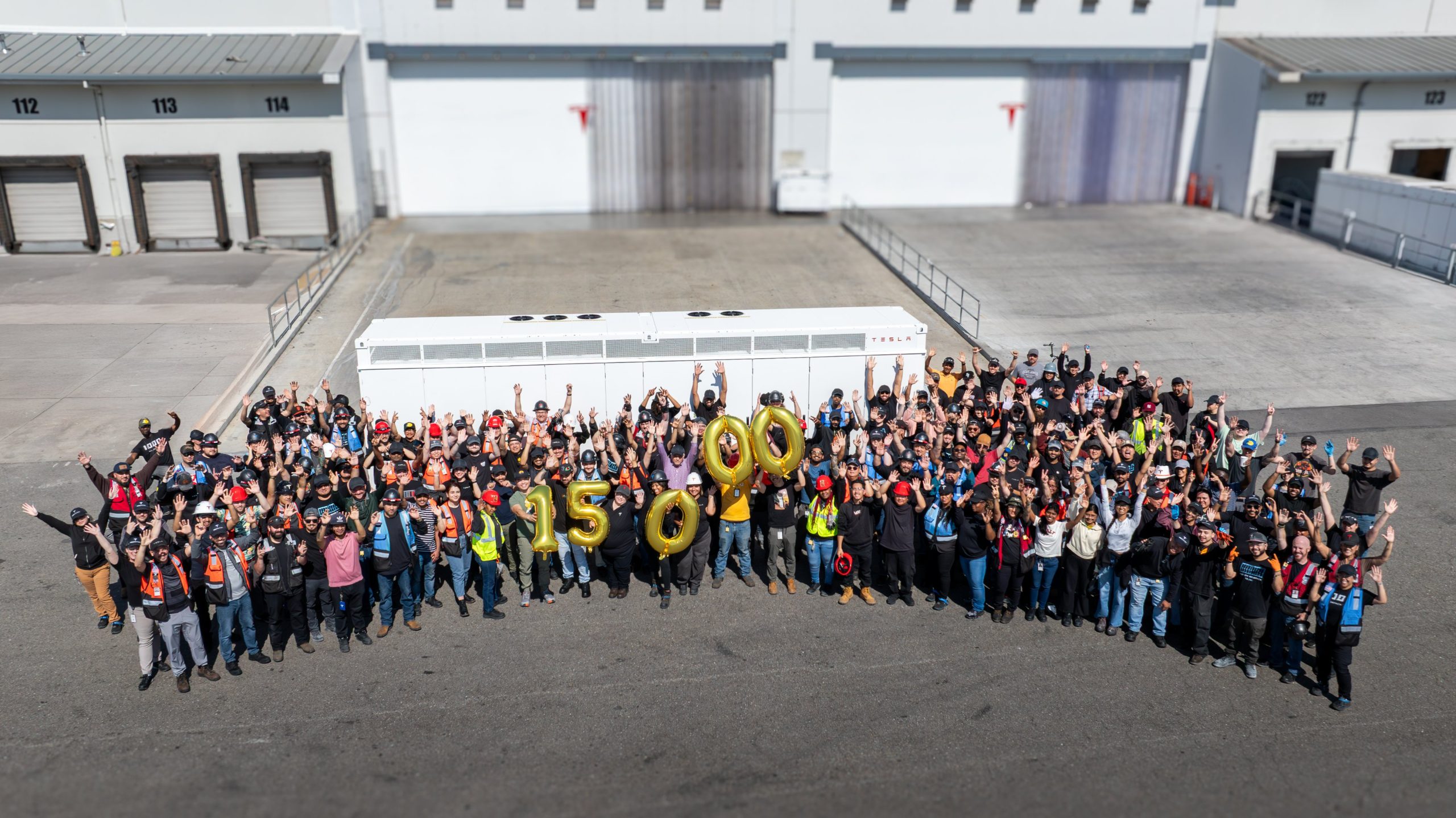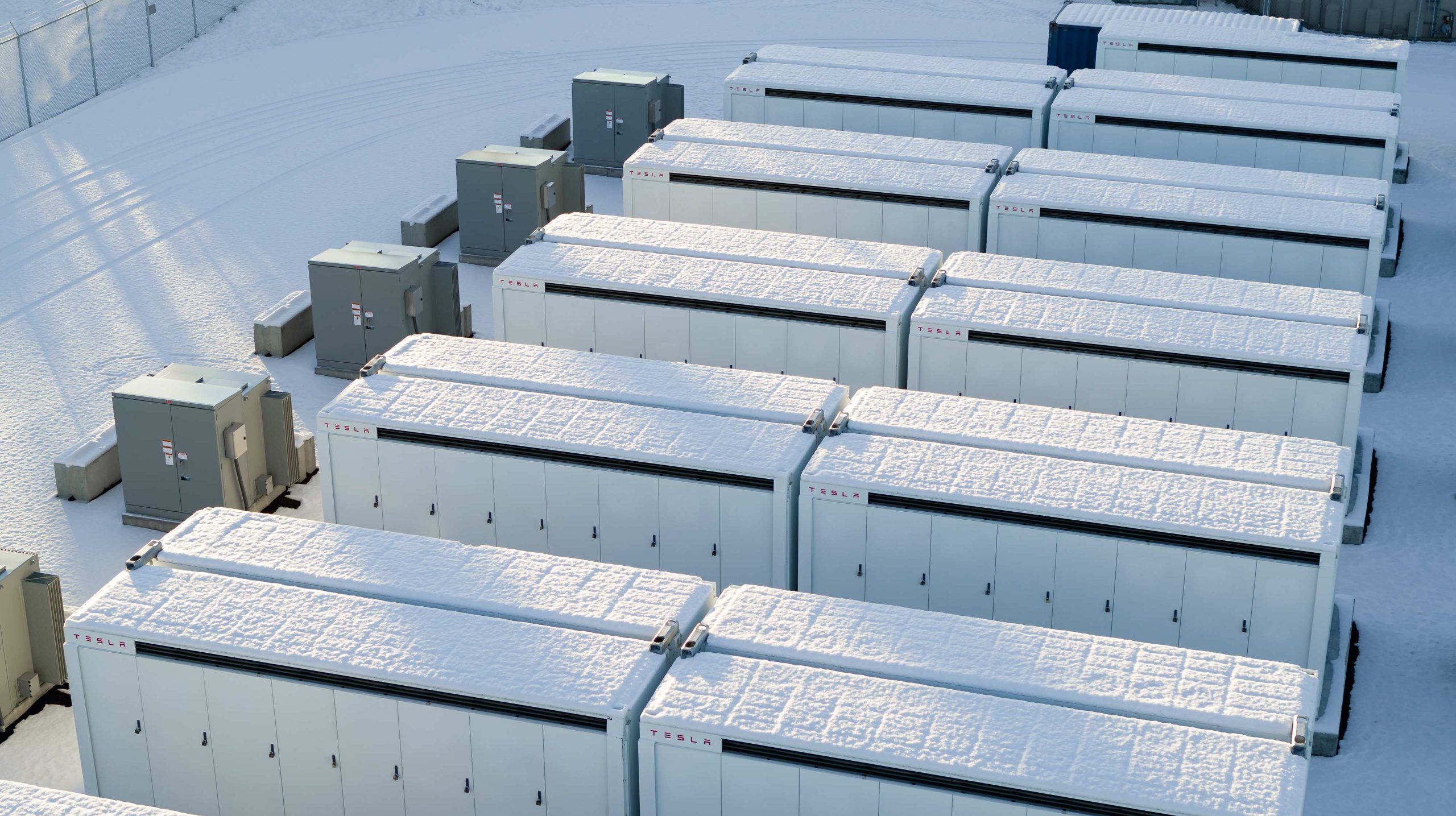

Energy
Tesla pushes battery improvements amid renewable energy’s attack on coal
In the spirit of constant innovation, Tesla’s batteries and energy storage products continue to see improvements over time. From improving energy density to more efficiencies in manufacturing, Tesla’s energy products are evolving just as fast as the company’s electric cars. Such improvements were teased by Tesla President of Automotive Jerome Guillen. In a recent interview with CNBC, Guillen remarked that the company’s batteries are always dynamic, and are in a constant process of improvement.
“We are improving the design of the cell. The design of the cell is not frozen. It evolves, and we have a nice roadmap of technology improvements for the coming years,” Guillen said.
Tesla’s upcoming ramp of its energy products is coming at the perfect time. Amidst Tesla’s push to increase the production of its energy products, as well as the company’s efforts to achieve $100 per kWh in battery cell costs, the renewable energy market itself is also making huge strides.
The results of a recent analysis from research firm Lazard has revealed that wind and solar energy costs in the United States have finally reached a point where they are becoming more and more competitive with traditional power sources, such as those derived from coal. And that’s without tax subsidies. With subsidies in the picture, the cost advantages of renewable energy over coal are even more notable.
Lazard’s levelized cost of energy (LCOE) analysis concluded that US onshore wind energy costs now average between $26/MWh and $56/MWh without subsidies. Solar energy, on the other hand, averages around $36/MWh and $44/MWh with no subsidies involved. In comparison, the average cost of US existing coal plants is between $27/MWh and $45/MWh.
With such competitive costs, renewable energy is currently challenging coal generation. And the movement is spreading — in the Upper Midwest, Xcel Energy’s utilities have revealed plans to retire about 50% of their coal-fired capacity in the coming years. To replace these facilities, Xcel is looking to wind energy. In a statement to Utility Drive, Xcel CEO Ben Fowke stated that the lowering price of sustainable energy is a large factor for the company’s push towards wind power.
“We’re looking at [wind energy prices] in the low teens to low 20s [in dollars/MWh] — not starting prices, but levelized across the 25-year life of the project. That beats gas, even at today’s prices,” he said.
Considering that wind and solar power are not ever-present, though, the key to a shift to sustainability lies in solutions such as industry-grade battery storage systems, which are capable of storing and distributing energy. This is where Tesla Energy comes in. In a statement to the San Francisco Chronicle back in September, Tesla CTO JB Straubel noted that grid-scale battery solutions such as Tesla’s Powerpacks, which are easily scaled and are reliable, are starting to become an ideal alternative to fossil fuel-powered solutions.
“I think what we’ll see is we won’t build many new peaker plants, if any. Already what we’re seeing happening is the number of new ones being commissioned is drastically lower, and batteries are already outcompeting natural gas peaker plants,” Straubel said.
Such changes are becoming more notable in the United States. Just recently, the state of California announced that it had approved PG&E’s proposal to build a record-breaking 2.2 GWh battery storage project to replace three gas-powered plants. In South Dakota, BP plc has also installed a Tesla battery storage system in at one of its wind energy farms. While BP’s 212 KW/840 kWh battery storage system is not as large-scale as the recently announced CA project, the company has noted that the installation could be expanded in the future.
Wood Mackenzie, a research firm, estimates that the world’s shift from fossil fuels to renewables could happen as early as 2035. At this time, the company expects electric cars, wind power, and solar power to be more prevalent than gasoline and diesel-powered vehicles, as well as fossil fuel-based electricity. Wood Mackenzie notes that the shift towards renewables will hit a tipping point when EVs and clean energy solutions achieve a 20% market share. With this in mind, Tesla’s ramp of its energy business could not come faster.
Energy
Tesla Lathrop Megafactory celebrates massive Megapack battery milestone
The Tesla Megapack is the backbone of Tesla Energy’s battery deployments.

The Tesla Lathrop Megafactory recently achieved a new milestone. As per the official Tesla Megapack account on X, the Lathrop Megafactory has produced its 15,000th Megapack 2 XL battery.
15,000 Megapack Batteries
Tesla celebrated the milestone with a photo of the Lathrop Megafactory team posing with a freshly produced Megapack battery. To commemorate the event, the team held balloons that spelled out “15,000” as they posed for the photo.
The Tesla Megapack is the backbone of Tesla Energy’s battery deployments. Designed for grid-scale applications, each Megapack offers 3.9 MWh of energy and 1.9 MW of power. The battery is extremely scalable, making it perfect for massive energy storage projects.
More Megafactories
The Lathrop Megafactory is Tesla’s first dedicated facility for its flagship battery storage system. It currently stands as the largest utility-scale battery factory in North America. The facility is capable of producing 10,000 Megapack batteries every year, equal to 40 GWh of clean energy storage.
Thanks to the success of the Megapack, Tesla has expanded its energy business by building and launching the Shanghai Megafactory, which is also expected to produce 40 GWh of energy storage per year. The ramp of the Shanghai Megafactory is quite impressive, with Tesla noting in its Q1 2025 Update Letter that the Shanghai Megafactory managed to produce over 100 Megapack batteries in the first quarter alone.
Tesla Energy’s Potential
During the first quarter earnings call, CEO Elon Musk stated that the Megapack is extremely valuable to the energy industry.
“The Megapack enables utility companies to output far more total energy than would otherwise be the case… This is a massive unlock on total energy output of any given grid over the course of a year. And utility companies are beginning to realize this and are buying in our Megapacks at scale,” Musk said.
Energy
Tesla Megapacks powers the xAI Colossus supercomputer
Tesla Megapacks step in to stabilize xAI’s Colossus supercomputer, replacing natural gas turbines. Musk’s ventures keep intertwining.

Tesla Megapack batteries will power the xAI Colossus supercomputer in Memphis to ensure power stability. The collaboration between Tesla and xAI highlights the synergy among Elon Musk’s ventures.
The artificial intelligence startup has integrated Tesla Megapacks to manage outages and demand surges, bolstering the facility’s reliability. The Greater Memphis Chamber announced that Colossus, recently connected to a new 150-megawatt electric substation, is completing its first construction phase. This transition addresses criticism from environmental justice groups over the initial use of natural gas turbines.
“The temporary natural gas turbines that were being used to power the Phase I GPUs prior to grid connection are now being demobilized and will be removed from the site over the next two months.
“About half of the operating turbines will remain operating to power Phase II GPUs of xAI until a second substation (#22) already in construction is completed and connected to the electric grid, which is planned for the Fall of 2025, at which time the remaining turbines will be relegated to a backup power role,” the Chamber stated.
xAI’s rapid development of Colossus reflects its ambition to advance AI capabilities, but the project has faced scrutiny for environmental impacts. The shift to Megapacks and grid power aims to mitigate these concerns while ensuring operational continuity.
The Megapack deployment underscores the collaboration among Musk’s companies, including Tesla, SpaceX, Neuralink, and The Boring Company. Tesla appears to be the common link between all of Musk’s companies. For example, The Boring Company built a tunnel in Giga, Texas. In addition, Musk has hinted at a potential collaboration between the Tesla Optimus Bot and Neuralink. And from January 2024 to February 2025, xAI invested $230 million in Megapacks, per a Tesla filing.
Tesla Energy reported a 156% year-over-year increase in Q1 2025, deploying 10.4 GWh of storage products, including Megapacks and Powerwalls. Tesla’s plans for a new Megapack factory in Waller County, Texas, which is expected to create 1,500 jobs in the area, further signal its commitment to scaling energy solutions.
As xAI leverages Tesla’s Megapacks to power Colossus, the integration showcases Musk’s interconnected business ecosystem. The supercomputer’s enhanced stability positions xAI to drive AI innovation, while Tesla’s energy solutions gain prominence, setting the stage for broader technological and economic impacts.
Energy
Tesla Energy celebrates one decade of sustainability
Tesla Energy has gone far since its early days, and it is now becoming a progressively bigger part of the company.

Tesla Energy recently celebrated its 10th anniversary with a dedicated video showcasing several of its milestones over the past decade.
Tesla Energy has gone far since its early days, and it is now becoming a progressively bigger part of the company.
Tesla Energy Early Days
When Elon Musk launched Tesla Energy in 2015, he noted that the business is a fundamental transformation of how the world works. To start, Tesla Energy offered the Powerwall, a 7 kWh/10 kWh home battery system, and the Powerpack, a grid-capable 100 kWh battery block that is designed for scalability. A few days after the products’ launch, Musk noted that Tesla had received 38,000 reservations for the Powerwall and 2,500 reservations for the Powerpack.
Tesla Energy’s beginnings would herald its quiet growth, with the company later announcing products like the Solar Roof tile, which is yet to be ramped, and the successor to the Powerwall, the 13.5 kWh Powerwall 2. In recent years, Tesla Energy also launched its Powerwall 3 home battery and the massive Megapack, a 3.9 MWh monster of a battery unit that has become the backbone for energy storage systems across the globe.
Key Milestones
As noted by Tesla Energy in its recent video, it has now established facilities that allow the company to manufacture 20,000 units of the Megapack every year, which should help grow the 23 GWh worth of Megapacks that have already been deployed globally.
The Powerwall remains a desirable home battery as well, with more than 850,000 units installed worldwide. These translate to 12 GWh of residential entry storage delivered to date. Just like the Megapack, Tesla is also ramping its production of the Powerwall, allowing the division to grow even more.
Tesla Energy’s Role
While Tesla Energy does not catch as much headlines as the company’s electric vehicle businesses, its contributions to the company’s bottom line have been growing. In the first quarter of 2025 alone, Tesla Energy deployed 10.4 GWh of energy storage products. Powerwall deployments also crossed 1 GWh in one quarter for the first time. As per Tesla in its Q1 2025 Update Letter, the gross margin for the Energy division has improved sequentially as well.
-

 Elon Musk4 days ago
Elon Musk4 days agoTesla investors will be shocked by Jim Cramer’s latest assessment
-

 News1 week ago
News1 week agoTesla Robotaxi’s biggest challenge seems to be this one thing
-

 Elon Musk2 weeks ago
Elon Musk2 weeks agoFirst Look at Tesla’s Robotaxi App: features, design, and more
-

 News2 weeks ago
News2 weeks agoSpaceX and Elon Musk share insights on Starship Ship 36’s RUD
-

 News2 weeks ago
News2 weeks agoWatch Tesla’s first driverless public Robotaxi rides in Texas
-

 News1 week ago
News1 week agoWatch the first true Tesla Robotaxi intervention by safety monitor
-

 News2 weeks ago
News2 weeks agoTesla has started rolling out initial round of Robotaxi invites
-

 Elon Musk2 weeks ago
Elon Musk2 weeks agoTesla to launch in India in July with vehicles already arriving: report

















